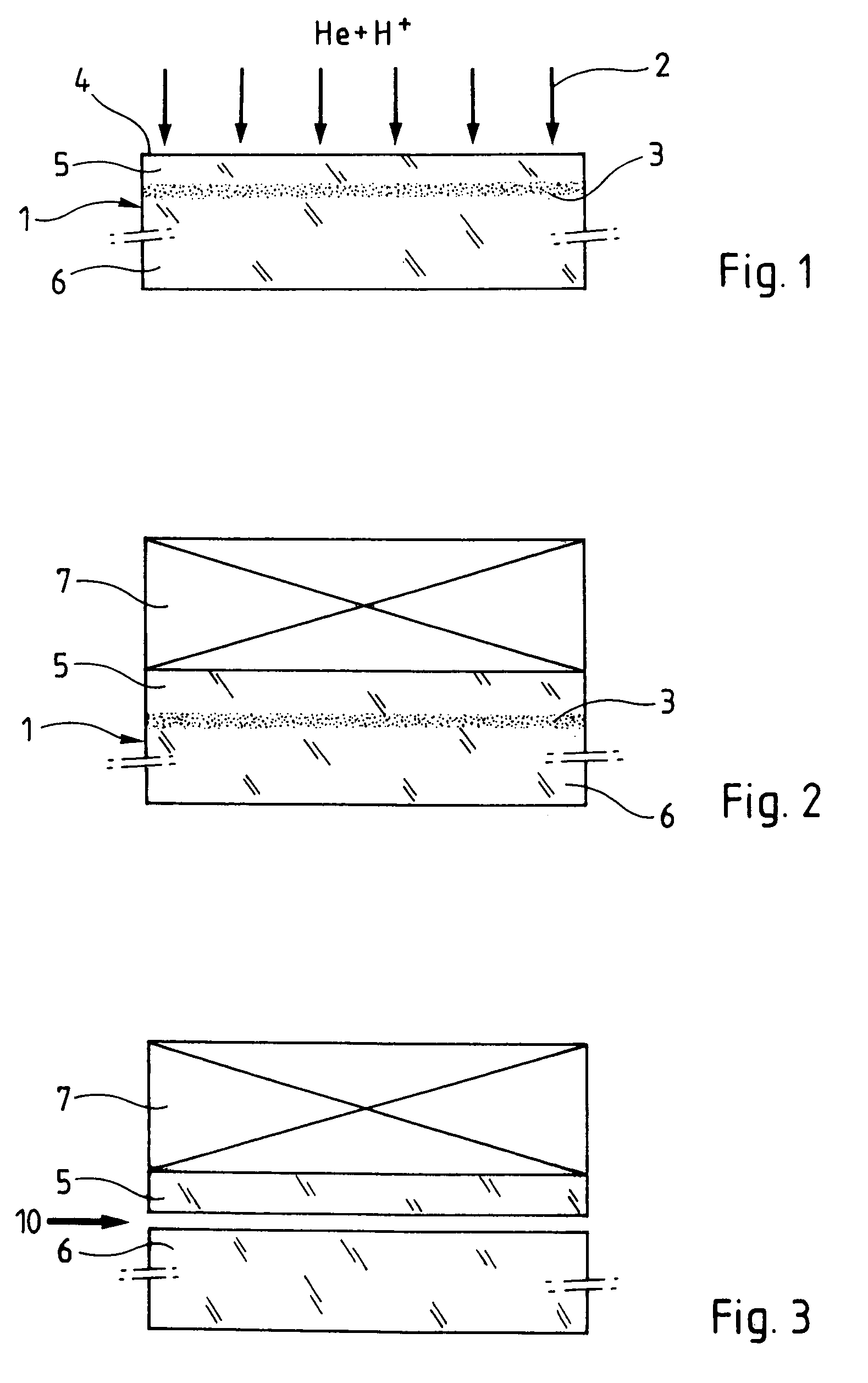Method of catastrophic transfer of a thin film after co-implantation
a technology of co-implantation and thin film, which is applied in the direction of basic electric elements, semiconductor/solid-state device manufacturing, electric devices, etc., can solve the problems of affecting the crystalline reducing the quality of the material, and reducing the possibility of crystalline defects during the following treatment, so as to achieve high mechanical stress, low roughness of the surface, and high quality
- Summary
- Abstract
- Description
- Claims
- Application Information
AI Technical Summary
Benefits of technology
Problems solved by technology
Method used
Image
Examples
examples
[0066]According to a first embodiment of the invention, a substrate of Si (˜700 μm) comprising a layer of thermal SiO2 on the surface (for example 145 nm) was implanted initially with helium atoms under implantation conditions of 70 keV at 1×1016 ions / cm2, and then implanted with hydrogen atoms under implantation conditions of 30 keV at 4.25×1016 ion s / cm2. This source substrate was next joined to a target substrate of Si (˜700 μm) by direct bonding. A heat treatment around 350° C. induced the growth of cavities of platelet type localized at the hydrogen concentration peak. The helium atoms play the role of atoms trapped thereat and create a maximum of defects of platelet type at the applied temperature. After a certain time (for example 2 hours), with scarcely the commencement of insertion of a blade between the bonding interfaces in the form of a shock, catastrophic splitting at the location of maximum hydrogen concentration led to the transfer of the thin film of Si onto the targ...
PUM
 Login to View More
Login to View More Abstract
Description
Claims
Application Information
 Login to View More
Login to View More - R&D
- Intellectual Property
- Life Sciences
- Materials
- Tech Scout
- Unparalleled Data Quality
- Higher Quality Content
- 60% Fewer Hallucinations
Browse by: Latest US Patents, China's latest patents, Technical Efficacy Thesaurus, Application Domain, Technology Topic, Popular Technical Reports.
© 2025 PatSnap. All rights reserved.Legal|Privacy policy|Modern Slavery Act Transparency Statement|Sitemap|About US| Contact US: help@patsnap.com


